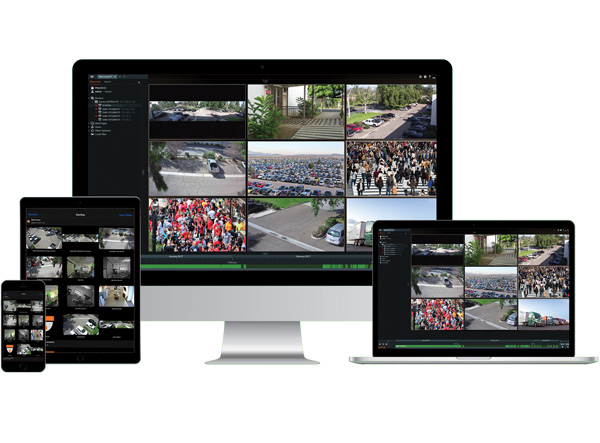The Internet of Things (loT) has altered our way of life within the last ten years. It helped reduce the manual labor and the time of production in various sectors. Drainage systems are no exception and this technology has reached the depth of underground drains and piping systems. loT-based systems are rapidly being used to analyze, detect, and automate a bunch of problems like waterlogging, flooding, and wastewater management. This blog aims to explore how loT is transforming drainage systems in India along with trends, benefits, and real-world applications.
The Need for Smart Drainage Systems in India
India, with perhaps the most diverse geographical location in the world, is frequently vulnerable to unexpected and rapid shifts in climate. Heavy monsoons and inadequate facilities cause frequent waterlogging and flooding, causing waterborne diseases across both rural and urban populations.
Traditional drainage systems rarely have real-time monitoring, and hence response to clogs and leaks is delayed. IoT-based drainage systems employ an active methodology, utilizing sensors, connectivity, and data analysis to enhance water flow, prevent flooding, and maintain environmental sustainability.
How IoT is Transforming Drainage Systems
IoT technology links physical devices like routers and sensors to the web, allowing for easy data collection and communication. In drainage networks, IoT devices track water levels, flow rates, and any blockages in real time. Here’s how IoT is driving transformation:
1. Real-Time Monitoring and Alerts
IoT sensors, like ultrasonic and water level sensors, provide real-time information on drainage conditions. For instance, the MQ135 sensor monitors sewage gas, while ultrasonic sensors estimate water levels and warn authorities about possible threats like a blockage or overflow
. These real-time data allow communities to respond quickly, avoiding waterlogging and minimizing illnesses from stagnant water. In cities like Hyderabad, Mumbai, and Chennai, where flooding is a common occurrence, IoT systems might deliver immediate warnings via GSM or cloud-based platforms, allowing for quick actions.
2. Predictive Analytics for Proactive Maintenance
Predictive analytics, supported by IoT and AI, represents a vital change in drainage management. Through the examination of past and real-time information, IoT equipment may recognize issues with drainage before things go awry. Sensor information, for instance, may detect patterns indicating blockage or wear out in the infrastructure so predictive maintenance. This strategy decreases downtime and saves repair costs. A 2023 study discovered that IoT-based predictive maintenance could lower operating costs by up to 20% in urban infrastructure management.
3. Automation for Optimized Water Flow
IoT enables automation of drainage operations, optimizing water flow and reducing wastage. Smart drainage systems may adjust operations by leveraging real-time data, such as diverting water during heavy rainfall to prevent overflowing. In water treatment plants, IoT devices such as the AR7088H Industrial LTE Router provide remote control of processes like managing flow and sludge treatment, leading to improved performance. This automation is especially critical in India’s smart city vision, where IoT has a central role to play in sustainable urban planning.
4. Environmental Sustainability
IoT-based drainage systems foster environmental sustainability by lowering wastewater and pollution. Water quality is tracked by sensors in drainage systems, and contaminants like toxic waste and sewer gas are detected. This facilitates authorities to act on the source of pollution quickly, resulting in clean waters
. Moreover, IoT systems enhance water usage in stormwater management, changing rainfall into a resource for independent communities. Most companies are using IoT to record rainfall, therefore supporting sustainable water management in India.
Emerging IoT Trends in Drainage Systems
Several IoT trends are shaping the future of drainage systems in India:
5G Integration: The rollout of 5G networks enhances IoT connectivity, enabling faster data transmission and real-time monitoring across large urban areas. By 2028, India’s 5G subscriptions are expected to reach 4.6 billion, expanding IoT usage in drainage management.
Edge computing: Edge computing processes data locally, resulting in decreased latency and bandwidth usage. This is important in time-sensitive tasks including flood prevention, where quick responses are needed.
Read more: https://leenusindia.com/emerging-trends-how-iot-is-transforming-drainage-systems-in-india/
#iotindrainagesystems
#predictivemaintenanceindrainage
#smartwatermanagementinindia
#smartcityinfrastructureindia
#undergrounddrainagesystem
The Need for Smart Drainage Systems in India
India, with perhaps the most diverse geographical location in the world, is frequently vulnerable to unexpected and rapid shifts in climate. Heavy monsoons and inadequate facilities cause frequent waterlogging and flooding, causing waterborne diseases across both rural and urban populations.
Traditional drainage systems rarely have real-time monitoring, and hence response to clogs and leaks is delayed. IoT-based drainage systems employ an active methodology, utilizing sensors, connectivity, and data analysis to enhance water flow, prevent flooding, and maintain environmental sustainability.
How IoT is Transforming Drainage Systems
IoT technology links physical devices like routers and sensors to the web, allowing for easy data collection and communication. In drainage networks, IoT devices track water levels, flow rates, and any blockages in real time. Here’s how IoT is driving transformation:
1. Real-Time Monitoring and Alerts
IoT sensors, like ultrasonic and water level sensors, provide real-time information on drainage conditions. For instance, the MQ135 sensor monitors sewage gas, while ultrasonic sensors estimate water levels and warn authorities about possible threats like a blockage or overflow
. These real-time data allow communities to respond quickly, avoiding waterlogging and minimizing illnesses from stagnant water. In cities like Hyderabad, Mumbai, and Chennai, where flooding is a common occurrence, IoT systems might deliver immediate warnings via GSM or cloud-based platforms, allowing for quick actions.
2. Predictive Analytics for Proactive Maintenance
Predictive analytics, supported by IoT and AI, represents a vital change in drainage management. Through the examination of past and real-time information, IoT equipment may recognize issues with drainage before things go awry. Sensor information, for instance, may detect patterns indicating blockage or wear out in the infrastructure so predictive maintenance. This strategy decreases downtime and saves repair costs. A 2023 study discovered that IoT-based predictive maintenance could lower operating costs by up to 20% in urban infrastructure management.
3. Automation for Optimized Water Flow
IoT enables automation of drainage operations, optimizing water flow and reducing wastage. Smart drainage systems may adjust operations by leveraging real-time data, such as diverting water during heavy rainfall to prevent overflowing. In water treatment plants, IoT devices such as the AR7088H Industrial LTE Router provide remote control of processes like managing flow and sludge treatment, leading to improved performance. This automation is especially critical in India’s smart city vision, where IoT has a central role to play in sustainable urban planning.
4. Environmental Sustainability
IoT-based drainage systems foster environmental sustainability by lowering wastewater and pollution. Water quality is tracked by sensors in drainage systems, and contaminants like toxic waste and sewer gas are detected. This facilitates authorities to act on the source of pollution quickly, resulting in clean waters
. Moreover, IoT systems enhance water usage in stormwater management, changing rainfall into a resource for independent communities. Most companies are using IoT to record rainfall, therefore supporting sustainable water management in India.
Emerging IoT Trends in Drainage Systems
Several IoT trends are shaping the future of drainage systems in India:
5G Integration: The rollout of 5G networks enhances IoT connectivity, enabling faster data transmission and real-time monitoring across large urban areas. By 2028, India’s 5G subscriptions are expected to reach 4.6 billion, expanding IoT usage in drainage management.
Edge computing: Edge computing processes data locally, resulting in decreased latency and bandwidth usage. This is important in time-sensitive tasks including flood prevention, where quick responses are needed.
Read more: https://leenusindia.com/emerging-trends-how-iot-is-transforming-drainage-systems-in-india/
#iotindrainagesystems
#predictivemaintenanceindrainage
#smartwatermanagementinindia
#smartcityinfrastructureindia
#undergrounddrainagesystem
The Internet of Things (loT) has altered our way of life within the last ten years. It helped reduce the manual labor and the time of production in various sectors. Drainage systems are no exception and this technology has reached the depth of underground drains and piping systems. loT-based systems are rapidly being used to analyze, detect, and automate a bunch of problems like waterlogging, flooding, and wastewater management. This blog aims to explore how loT is transforming drainage systems in India along with trends, benefits, and real-world applications.
The Need for Smart Drainage Systems in India
India, with perhaps the most diverse geographical location in the world, is frequently vulnerable to unexpected and rapid shifts in climate. Heavy monsoons and inadequate facilities cause frequent waterlogging and flooding, causing waterborne diseases across both rural and urban populations.
Traditional drainage systems rarely have real-time monitoring, and hence response to clogs and leaks is delayed. IoT-based drainage systems employ an active methodology, utilizing sensors, connectivity, and data analysis to enhance water flow, prevent flooding, and maintain environmental sustainability.
How IoT is Transforming Drainage Systems
IoT technology links physical devices like routers and sensors to the web, allowing for easy data collection and communication. In drainage networks, IoT devices track water levels, flow rates, and any blockages in real time. Here’s how IoT is driving transformation:
1. Real-Time Monitoring and Alerts
IoT sensors, like ultrasonic and water level sensors, provide real-time information on drainage conditions. For instance, the MQ135 sensor monitors sewage gas, while ultrasonic sensors estimate water levels and warn authorities about possible threats like a blockage or overflow
. These real-time data allow communities to respond quickly, avoiding waterlogging and minimizing illnesses from stagnant water. In cities like Hyderabad, Mumbai, and Chennai, where flooding is a common occurrence, IoT systems might deliver immediate warnings via GSM or cloud-based platforms, allowing for quick actions.
2. Predictive Analytics for Proactive Maintenance
Predictive analytics, supported by IoT and AI, represents a vital change in drainage management. Through the examination of past and real-time information, IoT equipment may recognize issues with drainage before things go awry. Sensor information, for instance, may detect patterns indicating blockage or wear out in the infrastructure so predictive maintenance. This strategy decreases downtime and saves repair costs. A 2023 study discovered that IoT-based predictive maintenance could lower operating costs by up to 20% in urban infrastructure management.
3. Automation for Optimized Water Flow
IoT enables automation of drainage operations, optimizing water flow and reducing wastage. Smart drainage systems may adjust operations by leveraging real-time data, such as diverting water during heavy rainfall to prevent overflowing. In water treatment plants, IoT devices such as the AR7088H Industrial LTE Router provide remote control of processes like managing flow and sludge treatment, leading to improved performance. This automation is especially critical in India’s smart city vision, where IoT has a central role to play in sustainable urban planning.
4. Environmental Sustainability
IoT-based drainage systems foster environmental sustainability by lowering wastewater and pollution. Water quality is tracked by sensors in drainage systems, and contaminants like toxic waste and sewer gas are detected. This facilitates authorities to act on the source of pollution quickly, resulting in clean waters
. Moreover, IoT systems enhance water usage in stormwater management, changing rainfall into a resource for independent communities. Most companies are using IoT to record rainfall, therefore supporting sustainable water management in India.
Emerging IoT Trends in Drainage Systems
Several IoT trends are shaping the future of drainage systems in India:
5G Integration: The rollout of 5G networks enhances IoT connectivity, enabling faster data transmission and real-time monitoring across large urban areas. By 2028, India’s 5G subscriptions are expected to reach 4.6 billion, expanding IoT usage in drainage management.
Edge computing: Edge computing processes data locally, resulting in decreased latency and bandwidth usage. This is important in time-sensitive tasks including flood prevention, where quick responses are needed.
Read more: https://leenusindia.com/emerging-trends-how-iot-is-transforming-drainage-systems-in-india/
#iotindrainagesystems
#predictivemaintenanceindrainage
#smartwatermanagementinindia
#smartcityinfrastructureindia
#undergrounddrainagesystem
0 Kommentare
0 Geteilt
77 Ansichten
0 Bewertungen













